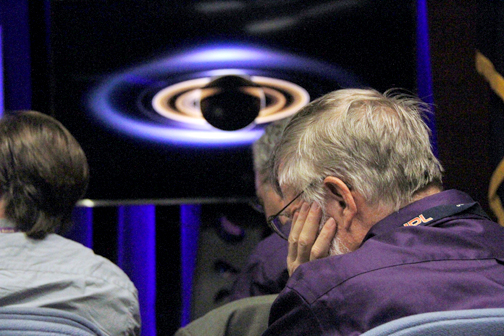
By Charly SHELTON
The Cassini spacecraft, after 20 years in space, ended its long mission last Friday in the early hours of the morning, 890 million miles from home. At 3:31 a.m. PST, Cassini plunged into Saturn’s atmosphere as it gave in to gravity and was pulled into the clouds of the gas giant. By falling into Saturn, the spacecraft would be burned up in the atmosphere, protecting the planet’s moons – some of which may be habitable for life. It hurtled along at 69,368 mph relative to Saturn and entered the atmosphere at 1,190 miles above the planet’s surface. Using its stabilizers, it fought to keep its antenna pointed at Earth, transmitting as long as possible. And then finally, silence. The signal travelled through space and reached the ground antenna on Earth 83 minutes later, cutting out at 4:54 a.m. PST. After a journey of 4.9 billion miles and covering two decades, this long-lived spacecraft is now gone.
“This morning, a lone explorer, a machine made by humankind finished its mission 900 million miles away. The nearest observer wouldn’t even know until 84 minutes later that Cassini was gone. To the very end the spacecraft did everything we asked,” said Earl Maize, program manager for the mission.
The mission end comes after 21 weeks of risky dives through the space between Saturn and its rings, getting ever closer to the planet to analyze the upper layers of atmosphere. These dives were a risk but Cassini performed well, as it did on its final dive.

“The last 21 weeks, since April, I was a lot more nervous when we went through [the rings] for the first time. I could barely speak, I could barely breathe when we were waiting for that signal to say that we got inside the rings. And this last time, I have no words because it did exactly what it was supposed to do. Even better. As it always did,” said Julie Webster, spacecraft operations manager.
The spacecraft behaving well in its final dive was a sentiment echoed by all who worked with it in the moments after the finale.
“There are times in this world when things just light up and everything is just perfect … a child’s laugh, desert sunset, this morning,” Maize said. “It just couldn’t be better and, if you think about that moment that we’ve been waiting for these entire seven years, everything clicked just right. We could step back and say the same thing about the Cassini mission – a superb machine in an amazing place doing everything it could possibly do to reveal the mysteries and secrets of our solar system.”
Cassini even exceeded the expectations of the projected data recovery. As it plummeted towards Saturn, it was able to aim its antenna at Earth for a longer time, providing more data than was expected.
“We got actually almost 30 seconds longer than we predicted. It didn’t seem like it to me because it was over in the flash of an eye. All night long, the minutes seemed like a long time and then, all of a sudden, it was over,” Webster said.
The readings that were transmitted back will be pored over for years, possibly decades, as new and unknown aspects of Saturn are revealed in the goodbye data. As it was received in the early hours of Friday morning, scientists began interpreting the data immediately upon arrival and findings will be released as the data is fully analyzed, hopefully sometime in the next few weeks, Maize said.
“The Cassini mission ended this morning high over the clouds of Saturn. The spacecraft is gone. Thanks and farewell, faithful explorer,” Maize said. “But the legacy of Cassini has just begun. The effect that Cassini has and will have on the future planetary exploration will go on for decades. Thank you and long live Cassini.”
To see Cassini’s final images taken just hours before the plunge, and for all the images and science that the spacecraft has sent back of Saturn over the last 13 years, visit Saturn.JPL.NASA.gov.
